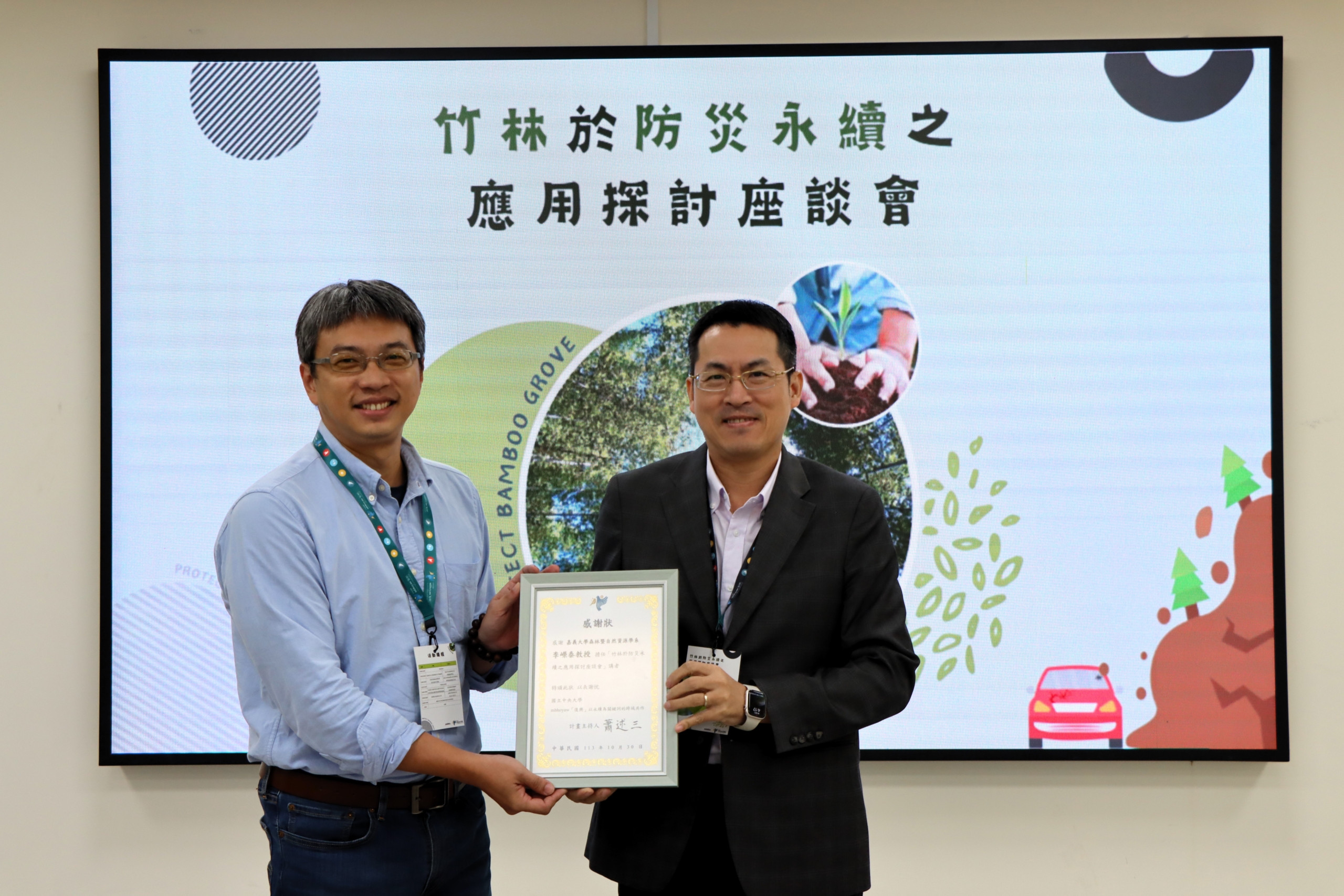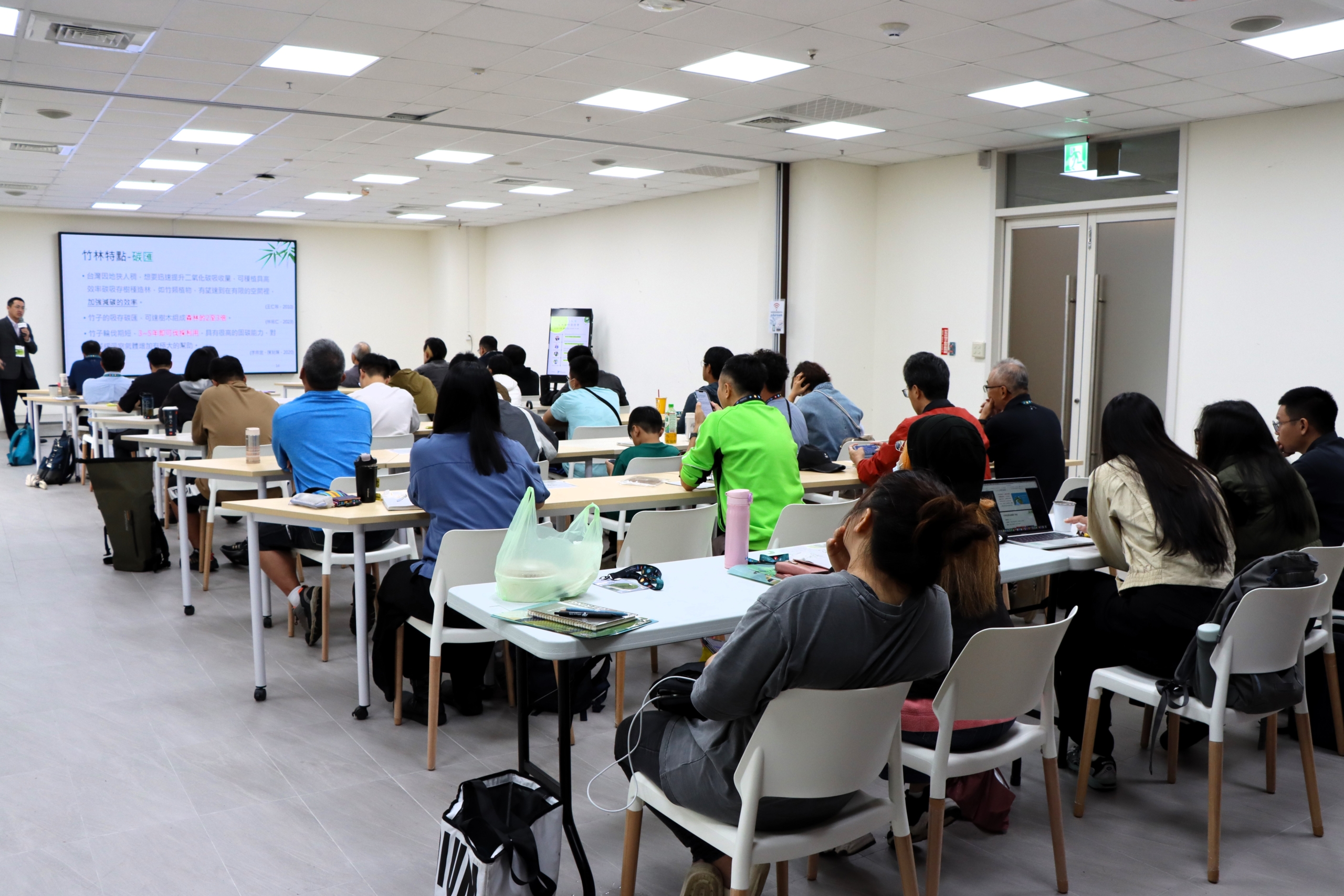The Beauty of Bamboo: A Blend of Culture and Practicality
Professor Li Jung-Tai opened his talk with a famous line from Su Shi’s poem Studio of the Green Culm of the Monk of Yuqian: “One may go without meat, but not without bamboo. Without meat, one grows thin; without bamboo, one grows vulgar.” Professor Li emphasized bamboo’s significance in traditional Chinese culture as a symbol of elegance while also highlighting its extensive practical applications, particularly as a construction material.
He went on to outline the current state of Taiwan’s bamboo resources, noting that bamboo forests cover 5% of the nation’s forested land, approximately 180,000 hectares, containing an estimated 1.58 billion bamboo culms. This abundance underscores bamboo’s potential for sustainable development. However, Professor Li cautioned that unmanaged bamboo forests are prone to issues such as toppling and aging, which not only diminish their economic value but also increase the risk of landslides on sloped terrain.
The Potential and Challenges of Bamboo in Carbon Sequestration
Professor Li highlighted the recent approval of the bamboo forest carbon sequestration methodology on October 28, providing an in-depth explanation of the three types of carbon sequestration: green carbon, which is stored within vegetation; yellow carbon, sequestered in soil; and blue carbon, found in marine ecosystems. Due to bamboo’s exceptional carbon absorption capacity, it holds significant potential for advancing carbon sequestration initiatives. However, the precise methodologies for calculating bamboo’s carbon sequestration capabilities are still pending further guidelines from the Ministry of Environment.
He also shared some common applications of bamboo: moso bamboo is often used to produce bamboo charcoal and flooring. In contrast, ma bamboo is frequently utilized in scaffolding and other construction materials. Additionally, bamboo’s roots have strong soil-binding capabilities, helping to prevent shallow landslides. However, he cautioned that the depth of bamboo’s root systems tends to be uniform, meaning that in the event of a landslide, an entire bamboo forest could slide together. For this reason, he suggested that mixed forests of bamboo and trees are more advantageous for soil and water conservation.
Government’s Multi-Faceted Strategies for Promoting the Bamboo Industry
Professor Li discussed recent government efforts to promote the bamboo industry, spanning upstream production, processing, market development, and education. He shared his personal experience participating in a government-supported initiative in Shibi, Gukeng Township, Yunlin, which combined “bamboo forest therapy” with ecological tours. This initiative exemplifies the government’s innovative approach to bamboo industry development.
In contrast, Professor Li highlighted China’s “Replacing Plastic with Bamboo” policy and its strategies for integrating bamboo into various industries, such as everyday products and cultural tourism. During his visit to China in July, he observed significant advancements in bamboo processing and artisanal crafts, reflecting the vast potential of the industry.
Concluding his presentation, Professor Li returned to the theme of value-added applications for bamboo. He emphasized that while bamboo’s carbon sequestration potential is immense, its applications should not be limited to food consumption. From construction materials and handicrafts to carbon sequestration initiatives, bamboo demonstrates diverse possibilities, positioning it as a resource with promising potential for the future.
Speaker Professor Li, Jung-Tai (Department of Forestry and Natural Resources, National Chiayi University)
Text by Deng, Jia-Yang
Editor by Li, Ruo-Jia
Photos by Li, Ruo-Jia




